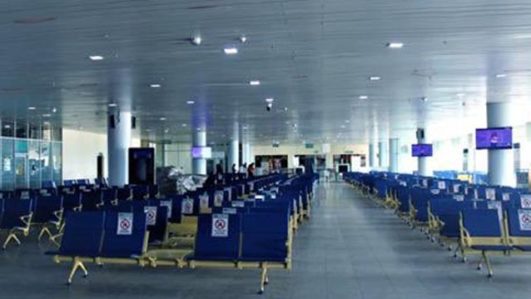World airlines have warned the Nigerian government and others across the globe not to levy extra fees and charges on passengers in the COVID-19 era.
The airlines, under the aegis of the International Air Transport Association (IATA), said imposing extra cost due to health and safety programmes would raise the cost of flying and further discourage early recovery.
The operators said this on the heels of another massive decline in passenger demand recorded for the month of May. Measured in revenue passenger kilometres (RPKs), the traffic dropped by 91.3 per cent compared to May 2019. However, this was a mild uptick compared to the 94 per cent annual decline recorded in April 2020. The improvement was driven by a recovery in some domestic markets, most notably China.
Recall that the Federal Airports Authority of Nigeria (FAAN), recently raised the Passenger Service Charge by 100 per cent and to take effect on August 1. Local airlines have expressed concerns, saying the increase would spike fares as airlines resume operations today.
IATA’s Director-General and CEO, Alexandre de Juniac, said governments needed to avoid adding blockers to the recovery, such as implementing entry quarantines and increasing fees.
“They have the same impact as outright travel bans and will keep economies closed down to the benefits of aviation connectivity. Governments should avoid new fees and charges to cover the cost of COVID-19 related health measures, such as testing and contact tracing, which will make travel less accessible.
“Travel and tourism accounts for 10.3 per cent of global GDP, and 300 million jobs. It is in everybody’s interest, including governments, to remove barriers to travel as soon as it is safe to do so. And in the process, it is critical that governments don’t stall the fragile recovery by introducing new regulatory or cost barriers to travel,” de Juniac said.
He reminisced that May was not quite as terrible as April. “That’s about the best thing that can be said. As predicted, the first improvements in passenger demand are occurring in domestic markets. International traffic remained virtually stopped in May.
“We are only at the very beginning of a long and difficult recovery. And there is tremendous uncertainty about what impact a resurgence of new COVID-19 cases in key markets could have,” he said.
The Chairman, Airline and Passenger Joint Committee (APJC), Bankole Bernard, yesterday, said the current recovery phase demands the cooperation of all stakeholders if the industry must get by.
Bernard said the local industry would be waking up with about 30 per cent passenger capacity but could be discouraged by hikes in fares given the weak purchasing power of the consumers.
Indeed, May international passenger demand fell 98.3 per cent compared to May 2019, which was virtually unchanged from the 98.4 per cent decline recorded in April. Capacity plummeted 95.3 per cent, and load factor sank 51.9 percentage points to 28.6 per cent meaning a bit more than a quarter of seats was filled, on average.
African airlines’ traffic sank 98.2 per cent in May, fractionally improved from a 98.7 per cent decline in April. Capacity contracted 77.8 per cent, which was the smallest supply reduction among the regions, and load factor dived 61.8 percentage points to just 5.3 per cent of seats filled, which was the lowest among regions.
European carriers’ May demand contracted 98.7 per cent compared to last year, virtually unchanged from a 98.9 per cent drop in April, year-over-year, and the worst decline among regions. Capacity dropped 97.5 per cent and load factor fell by 41.7 percentage points to 42.4 per cent.
Asia-Pacific airlines’ May traffic plunged 98.0 per cent compared to the year-ago period, also in line with a 98.2 per cent recorded in April. Capacity fell 95.1 per cent and load factor shrank 46.6 percentage points to 32.1 per cent.
Middle Eastern airlines posted a 98.0 per cent traffic contraction for May, compared with a 97.3 per cent demand drop in April. Capacity tumbled 93.9 per cent, and load factor sagged to 23.9 per cent, down 49.1 percentage points compared to the year-ago period.
North American carriers had a 98.2 per cent traffic decline in May, little changed from a 98.4 per cent decline in April. Capacity fell 94.5 per cent, and load factor dropped 56.7 percentage points to 27.2 per cent.
Latin American airlines experienced a 98.1 per cent demand drop in May compared to the same month last year, versus a 98.2 per cent drop in April. Capacity fell 96.6 per cent and load factor fell 38.1 percentage points to 45.9 per cent, best among the regions.
“We appear to be in the very early stages of a recovery in air travel. But the situation is fragile. We need governments to support and strengthen the restart by quickly implementing the International Civil Aviation Organisation’s (ICAO’s) global guidelines for restoring air connectivity contained in ICAO’s Takeoff: Guidance for Air Travel through the COVID-19 Public Health Crisis,” de Juniac said.


Leave a Reply